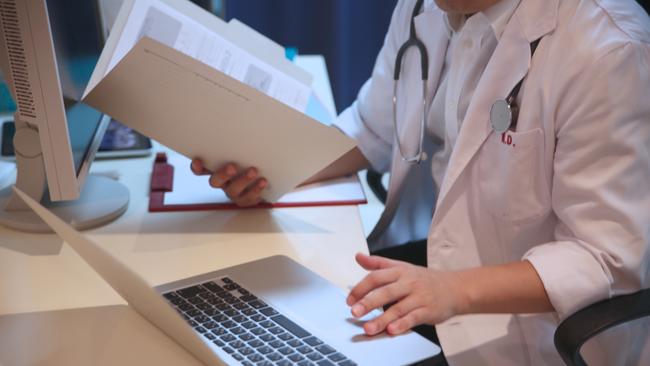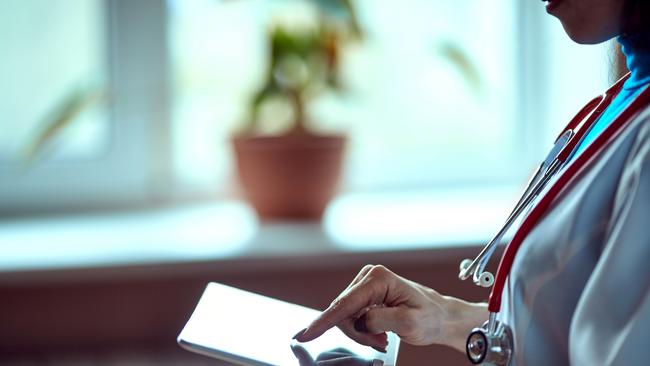Healthcare revolution: Medicare rebates for telehealth consults, electronic prescription system underway
A coronavirus-promoted healthcare revolution is underway with Medicare to fund telephone consultations and an electronic prescription system near completion. Here’s how telehealth consults work.
Health
Don't miss out on the headlines from Health. Followed categories will be added to My News.
From Monday all Australians will be able to stay at home and consult their doctor, nurse, psychologist or physiotherapist over the phone.
Medicare rebates have been extended to cover phone consults with a wide array of health workers to stop the spread of COVID-19 through medical waiting rooms.
The $669 million initiative will be available for GP services, medical specialists, nurse practitioners, mental health treatment, chronic disease management, Aboriginal and Torres Strait Islander health assessments, services to people with eating disorders, pregnancy support counselling, services to patients in aged care facilities, children with autism, and after-hours consultations.
The consultations will be able to take place over the phone or using video platforms such as FaceTime, Skype, Zoom or medical software packages via a website.
Royal Australian College of General Practitioners president Dr Harry Nespolon said it would “change medicine for Australians forever”.
“In two weeks COVID-19 has delivered more changes to the way we deliver health than the last 50 years, and it will be more efficient and more effective” he said.
Health Minster Greg Hunt said the telehealth rebates would be in place until September 30 when they will be reviewed.
“This will take pressure off hospitals and emergency departments and allow people to access essential health services in their home, while supporting self-isolation and quarantine policies,” he said.

The move will also allow older doctors at greater risk of COVID-19 and medicos in isolation because they have been exposed to the virus to continue to work.
To encourage GPs to provide telehealth and bulk bill patients the $6.30 bulk billing incentive they receive for treating pensioners and children under the age of 16 will be doubled to $12.60. This is paid on top of the $38.20 Medicare rebate for a standard consultation.
And to ensure practices stay open to provide face-to-face services the practice incentive payment the government pays GPs will also be increased.
It is understood any doctor providing telehealth will have to be linked to a physical practice to prevent exploitation of the new rules by groups who want to only provide telehealth.
Some patients will still need to receive a physical examination by a doctor before their health problem can be diagnosed so having a clinic the patient can attend is essential.
Dr Nespolon said there had been a 20-50 per cent downturn in GP business as a result of COVID-19 with patients too scared to come into medical practices in case they were infected with COVID-19.
As a result many doctor’s practices as well as pathology companies were in financial strife and the telehealth changes should turn that around.
Telehealth consults are the first step in modernising Australia’s healthcare system and the government hopes in the next two months to finalise a new electronic prescription system.

Doctors would be able to send a prescription up to a prescription registry and it could be downloaded by any pharmacy.
Alternatively they could give patients a screenshot of the prescription barcode that could be supplied to any chemist.
Melbourne GP Mukesh Haikerwal said patients could help out with telehealth by providing home blood pressure and blood sugar readings, heart rate readings from their smart watches or fitness trackers.
MORE NEWS:
China’s cover-up: How it hid killer coronavirus
More than 100,000 Aussies urgently call banks for help
Aussie girl’s life inside the COVID-19 death centre
Crims target Aussies in new SMS coronavirus scam
In the US the medical regulator the FDA has approved a feature on Apple’s smart watch that provides information on a person’s heart rhythm that helps identify patients with angina or those suffering other heart problems.
“In a time of national disaster the TGA (Australia’s medical regulator) should take the initiative and approve this feature here,” Dr Haikerwal said.
